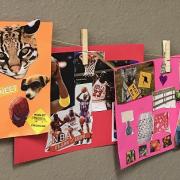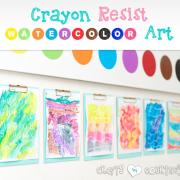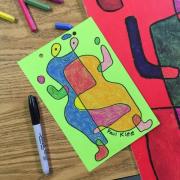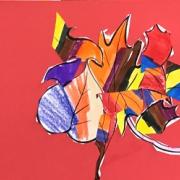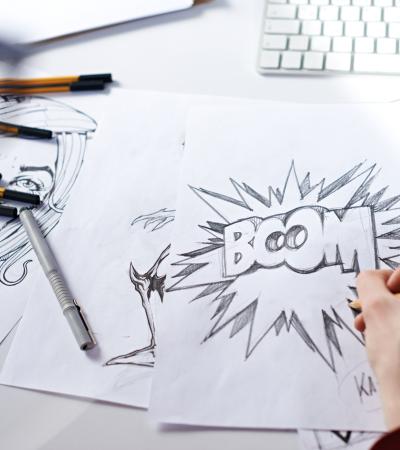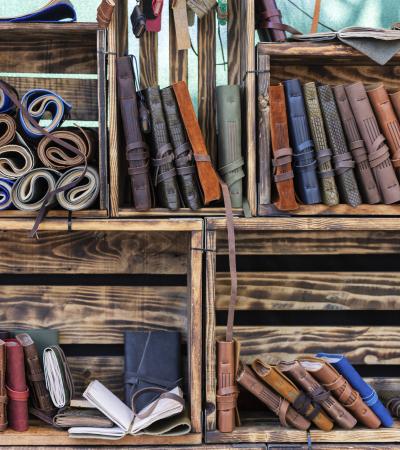This six-session pilot program encourages creativity — and interest in library services — for elementary- and middle school-aged children through open-ended art projects such as Watercolor Resist Paintings and Continuous Line Monsters.
We offered this program in collaboration with the organization Phoenix Family, which provided us with access to their existing after-school program and art supplies.
Advanced Planning
There were two main goals for this program: to encourage creative expression among vulnerable youth, and to get kids interested in their local library. Planning started a month before the session began, and included securing an organization to partner with, signing up a volunteer, determining what projects would be completed by the participants, and determining what supplies would be needed. The biggest challenge was finding projects that would be interesting for a wide age range of children.
Marketing
Because we were able to tap into an existing after-school program, we did not have to advertise to our target audience.
Budgeting
In our case, our partner organization, Phoenix Family, already had many common craft supplies available; scissors, glue sticks, card stock, markers, etc. Additional supplies were provided by donation.
The programs are specifically designed to use low-cost items and to make use of what many educators or program facilitators already have at their disposal. If all supplies for the six sessions were purchased, the cost would be approximately $25 to $50.
Day-of-event Activity
At every session, participants helped pass out supplies to other tables. The project for the day would then be discussed and explained. (Look for a full explanation of each project in the toolkit under Attachments at right.)
Art projects included:
- "I Am" Collage: Kids create a collage that represents their interests, dreams and best qualities using images and words cut from magazines or other sources
- Cubism 101: Participants cut up a picture they've colored and rearrange the pieces in a unique way to create a completely new piece of art.
- Watercolor Resist Painting: Kids learn about negative space by coloring with crayons, then painting over it with watercolors. The paint will not stick to the areas colored with crayon.
- Continuous Line Monsters: This project challenges kids to create a monster drawing with one continuous line, while exploring art history and storytelling.
Three adults facilitated programming for 20 to 25 children, offering assistance and encouragement as needed. Since the projects are all fairly straightforward, set-up time is minimal.
Program Execution
We had between 20 and 25 students participate during each of the sessions, varying in age from 5 to 13 years old. The majority of the projects were enjoyed by the kids, with a few of the more abstract projects causing some frustration for the younger children.
We made sure to choose open-ended projects, so that there was no "right" or "wrong" way to create your work of art. Each session took place over the course of an hour, with about 10 minutes at the beginning for set-up and 10 minutes at the end for clean-up.
Overall, these programs went over very well, but we would have benefited from having more time with the kids. This would have allowed us to spend more time using library tie-ins, and given the children more time to work on their art.
Advice
The most successful outcome from this pilot program was educating children, and their parents, about the libraries in their area and the services we provide. During the final session, parents were invited to come get library cards and even have old fines forgiven. We also provided the students and parents with information cards telling them where their nearest branches were — both by bus and by car. We were also able to provide each child with a free book to keep, further emphasizing the importance of literacy and family reading time.
Creativity programming can sound intimidating, but it doesn't have to be! By choosing open-ended, easy-to-explain projects, the kids were able to spend less time listening to instruction, and more time being artists. Use this information as a guide, and as inspiration for creating your own creative engagement sessions!

